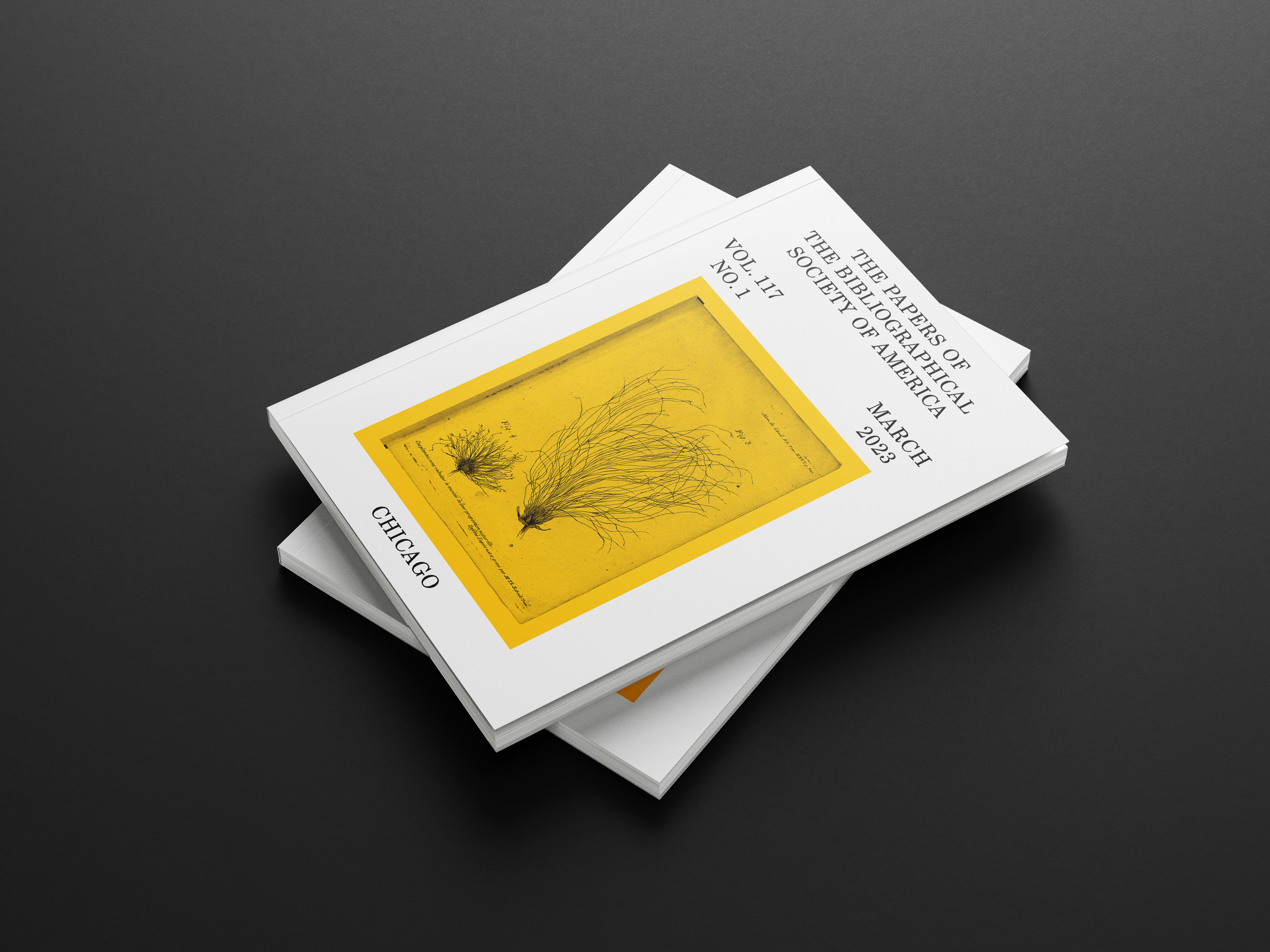PBSA Contributor Information
PBSA is eager to publish the latest bibliographical research, whether the focus is on subjects that have traditionally been seen as bibliography or on subjects that push and redefine the boundaries of what bibliography can do.
PBSA publishes original articles, bibliographical notes, reflections on bibliographical work, reviews of books and electronic resources, and review essays.
Articles are generally 8,000 to 12,000 words in length and are subject to double-anonymous peer review.
Bibliographical notes focus on specific instances of bibliographical work but do not necessarily make an argument; they are around 3,000 words in length and are subject to double-anonymous peer review as well.
Reflections on bibliographical work is a category for wide-ranging ways of writing about how we do bibliographical research, including pieces that are personal, experimental, or in dialogue. Editors sometimes commission pieces for this category, but we also accept submissions; reflections are vetted by the journal editors, but are not subject to peer review.
Reviews are typically around 1,500 words, with review essays between 1,500 and 3,000 words. Both are commissioned by the Reviews Editor; please see the guidelines on reviews for more information.
We hope that you will consider submitting your work to the journal. If you have questions about whether your work is a good fit for the journal, or about other aspects of publishing with us, please contact the editors: pbsa@bibsocamer.org.

Learn more about the submission process
Style Guide & technical requirements ↑
PBSA is read by a community of experts, but our community’s expertise is wide-spread: what might be obvious to a scholar of European incunabula might not be obvious to a scholar of Korean manuscripts, and what a bibliographer of born-digital material takes as their baseline of knowledge is not the same as a bibliographer of nineteenth-century periodicals. PBSA values work that is legible across our wide community. The strongest articles will balance their in-depth expertise with language that will make their research accessible to bibliographers in other fields.
Submission to PBSA does not require that pieces adhere to the following style and technical guidelines, as long as authors are prepared to make necessary adjustments for publication. In particular, authors should note the following prior to submission:
All works should be submitted as Word or Word-compatible documents; any tables should be in Word or Excel formats. PBSA follows a double-anonymous review process; please check that your submission has been anonymized. All submissions need to include an abstract, and any images, figures, or tables should be included as separate files.
The journal follows the current edition of the Chicago Manual of Style (now in its 17th edition) and the PBSA Style Guide. Authors should be aware that PBSA uses footnotes, not in-line citations or bibliographies, and that we use US spelling and date formatting; see our Style Guide for more details.
Final images should be a minimum of 300 dpi in a TIFF file. Images are typically printed in the journal in grayscale, but if there are any that you think require color, that should be noted. All images require permissions for publication, but you do not need to have permissions in hand, nor high-resolution images, for submission. If images are in the public domain or available under a share-alike license, that should be noted when communicating with editors.
Peer review ↑
We use double-anonymized peer review for unsolicited articles and bibliographical notes, and the identities of both authors and readers are kept concealed. The Editors will honor any reader’s request to reveal their identity.
Articles and bibliographical notes are subject to peer review; reflection pieces and reviews are exempted from the process.
Submitting with Editorial Manager ↑
All PBSA submissions are handled through Editorial Manager (EM), an online platform that allows authors to upload their submissions and editors to easily track the peer review process.
Prospective authors must create an account to use Editorial Manager; there are helpful videos and information on the EM website to guide you through the process. If you encounter difficulties with EM, please contact pbsa@bibsocamer.org for assistance.